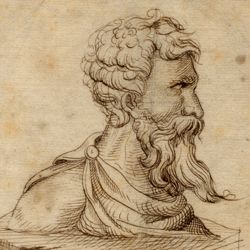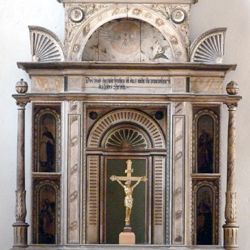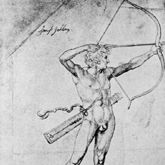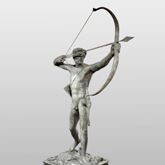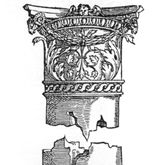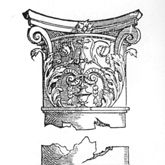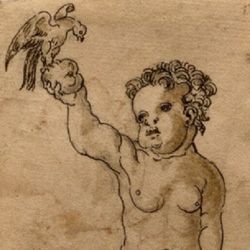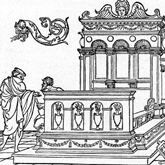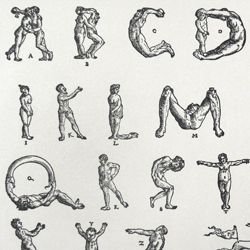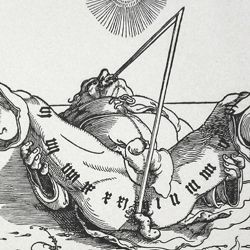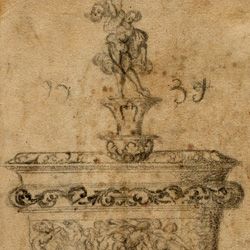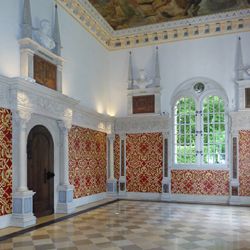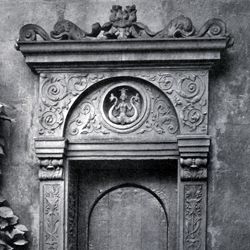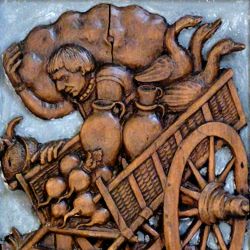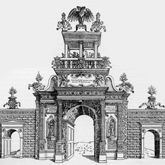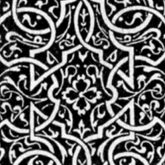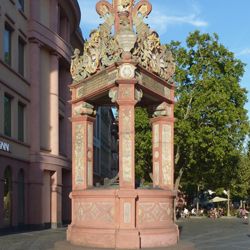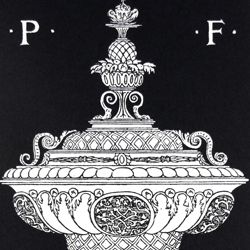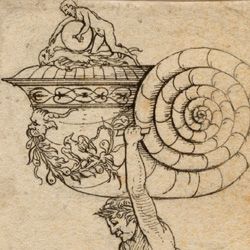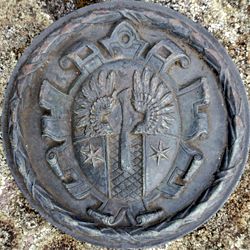Peter
Flötner (Flattner, Fledner, Fletner, Flettner, Flottner etc.)
sculptor, graphic artist, xylographer, copperplate engraver
died Nürnberg, 23. Oct 1546
Outstanding Renaissance artist in Nuremberg. Little is known about his biography. His oeuvre comprises about 100 woodcuts, two copperplate engravings, about 70 drawings, 30 sculptures and plastic works, one room décor (Hirsvogelsaal) and the plaques which are attributed to him according to sources of the 17th century.
Perhaps Flötner´s drafts are less important than it was originally assumed. A further problem is the divergence between the drafts and the realization of the pieces of work themselves, e.g. with the Apollo fountain (nowadays in Fembohaus) the drawing of which is of higher quality than the piece of work itself. Possibly Flötner was the first German artist to adopt the language of the Italian Renaissance without any condition. He seems to have derived pleasure from producing puttos and grotesque figures and shared an inclination for eroticism with the brothers Sebald und Barthel Beham, an inclination which can be detected even in Durer´s works at times. Flötner dealt with nudity not without humor, as can be seen for instance in his „human alphabet".
His column woodcuts may have been important for architectural reception. The chronological classification of his works is not easy.
Dr. Pablo de la Riestra
Style: Renaissance, German Renaissance
Period: 16th c.
